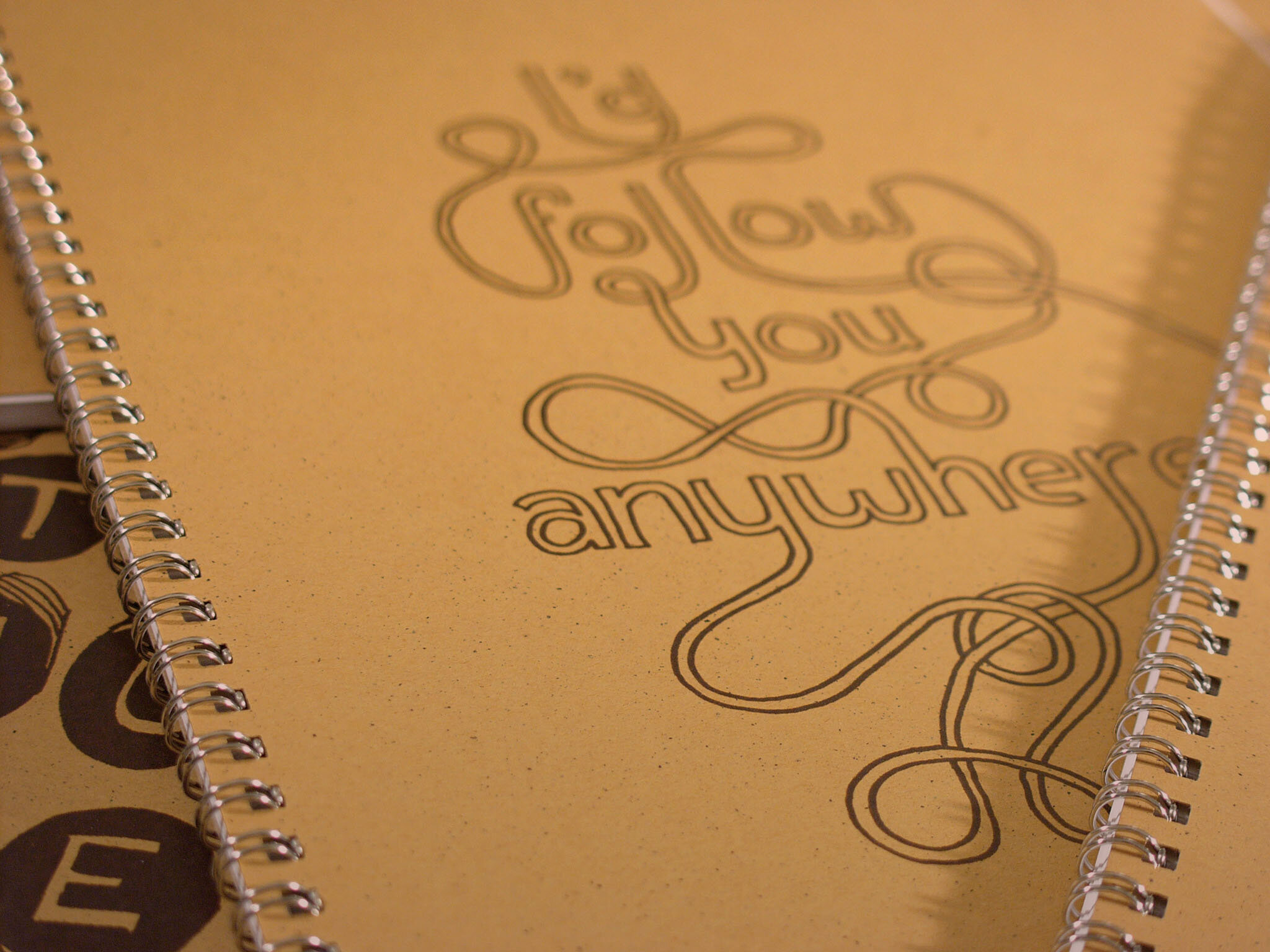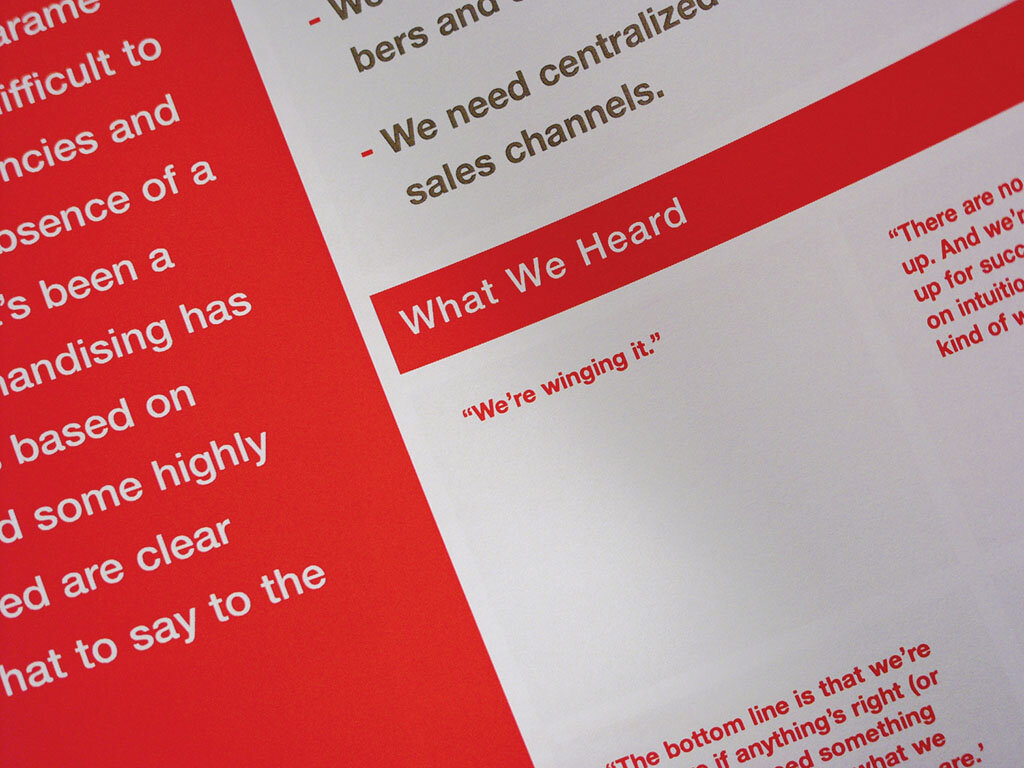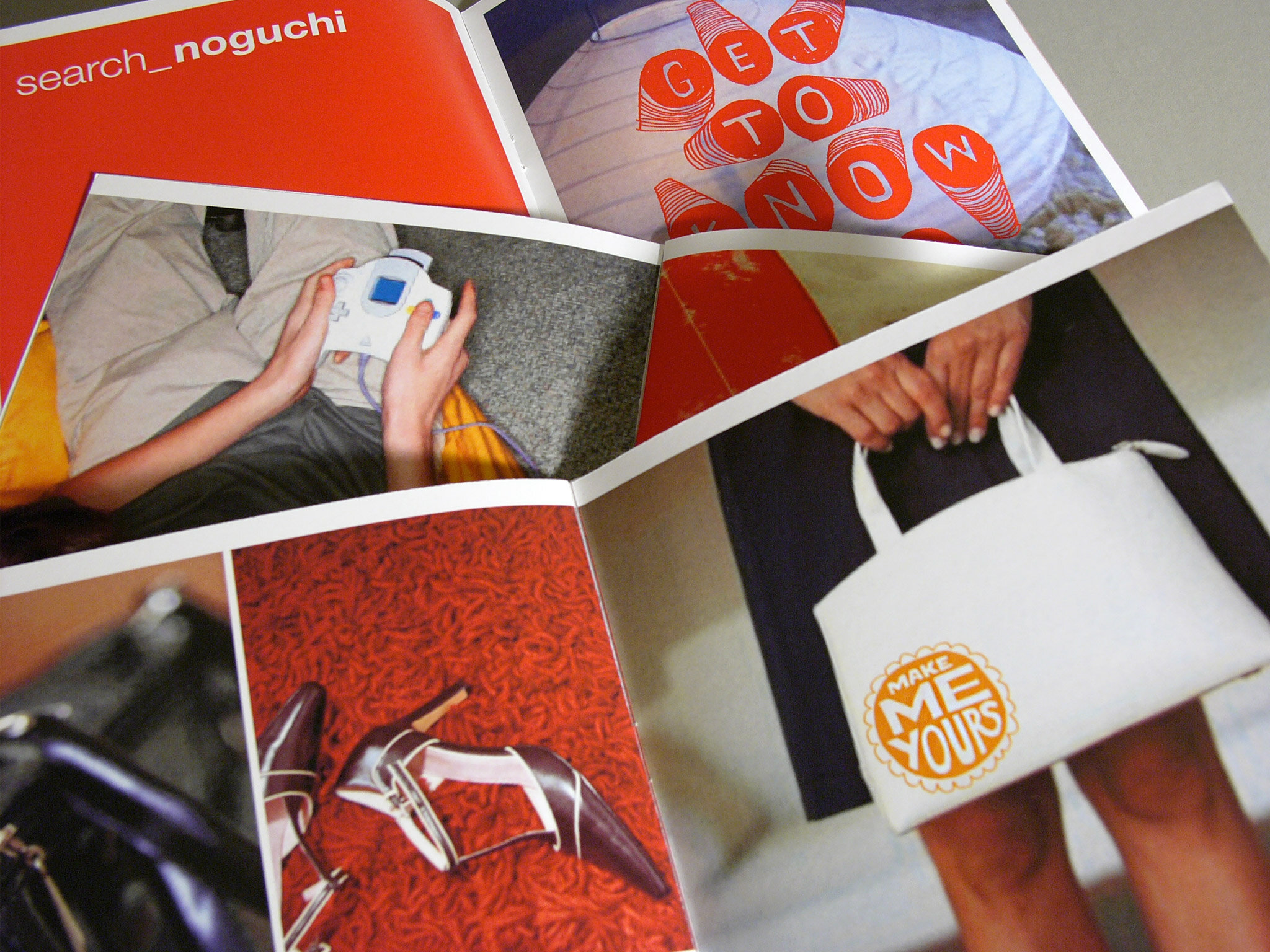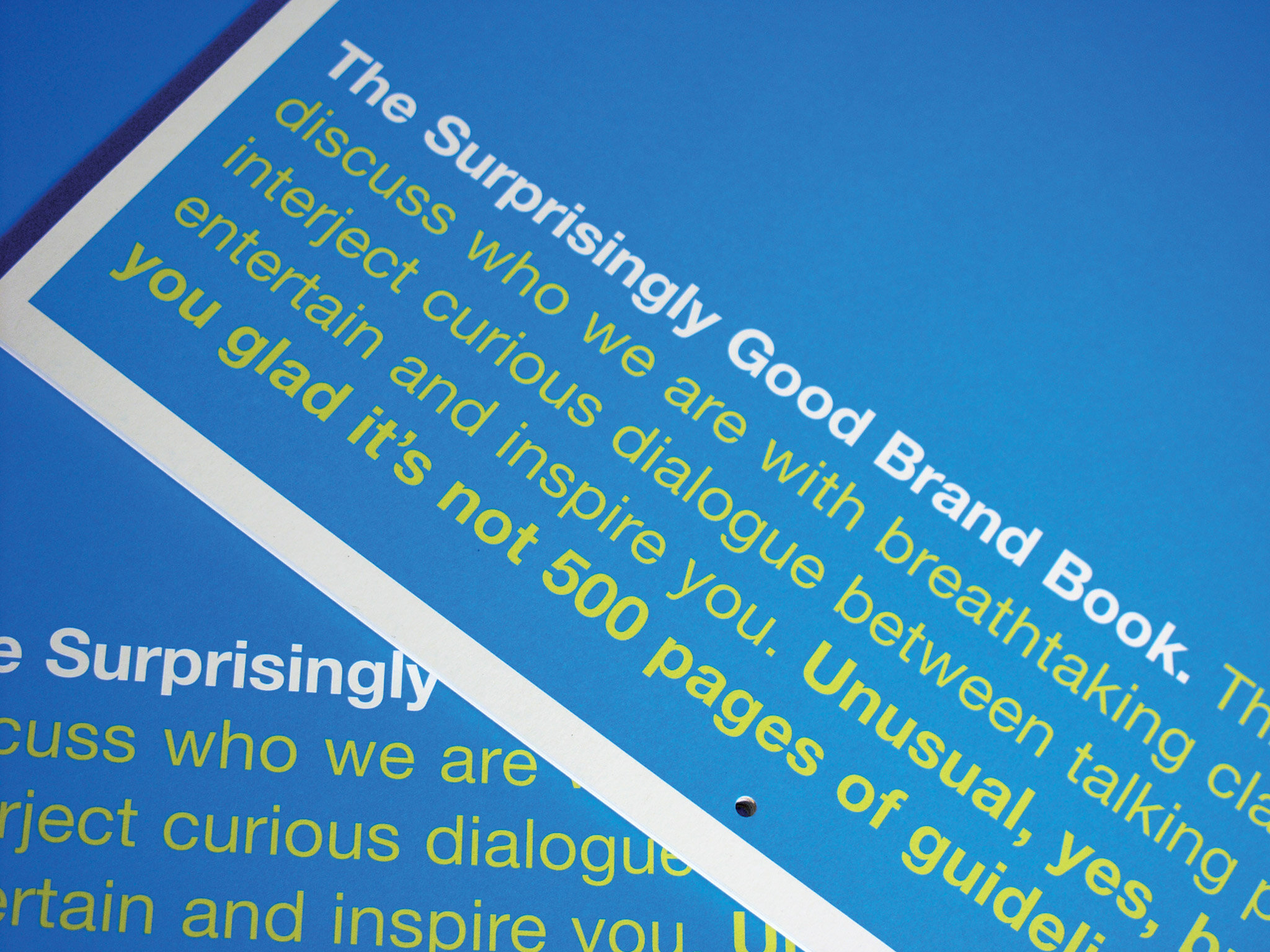
eBay
This one’s an oldie. But it’s a goodie. Mostly because it was our first high-profile branding gig that didn’t involve the traditional accoutrements of old-school branding. It wasn’t a ‘fix the logo to fix the business’ ask. It was much, much bigger. Scary big—in ways that changed how we approach our own work. The original brief (which we really should’ve framed once we won the project) mentioned plummeting engagement, diminished relevance in an increasingly fragmented space, a recent history of imitating other online retailers, and ‘significant barriers to internal collaboration’. How’d we go about helping fix that? By talking to a ton of people on the inside and in the real world about what eBay should stand for and sound like—what it could legitimately promise and how it could actually make good on that promise, tangibly. Easy, right? Oh, and we had to find a way to tell that story clearly to employees and their full roster of other agencies, at a time when people from Meg on down were jumping ship left and right. Good thing is, it actually worked. Years on, the company has finally gotten its act (largely) together again. The active user base has grown 2X. The stock has gone up by nearly 500%.
But, funnily enough, none of us had gray hair before eBay called…

The Problem
—
We’ve lost our mojo, our focus, and—worst of all—our voice.
As longtime eBay addicts, we were stoked to get this gig. Whether it was steel road bikes, vintage cameras, or original Bauhaus-era advertising art, we were all buying on way, way too frequent a basis. So, after watching eBay wander off and start imitating Amazon, then WalMart, then Target—usually to our collective consternation—we were just curious as to what kind of strategic thinking was (or wasn’t) going on over there. Frankly, the company sounded like a robot. And it looked a lot worse. But thanks to a brave few folks internally, all was not lost. A movement was afoot to re-shape the brand.
When then Director of Brand Marketing (Kevin McSpadden) called us, he said eBay was clearly in a tailspin—drifting further and further afield from the purpose that grounded the brand (and made it so resoundingly beloved) from the get-go. Pierre originally imagined eBay as an ‘organic, evolving, self-organizing web of individual relationships formed around shared interests’. He believed that people were basically good. And that if you built an ‘honest, open environment’ you’d bring the best out of people. Lately though, eBay felt increasingly closed. And less easy to trust. It felt schizophrenic, cluttered, confusing, and imitative. Internally, Brand was seen as a function of Marketing—an enforcement engine, not the magnet for bigger-picture thinking or instigator of change that it needed to be. Kevin wanted to see all of that change, and help the company get back to brilliant basics. Essentially, that’s where we came in.



The Research
—
Our most important audience might be us.
Needless to say, eBay is a big company. They’ve got a global presence and hundreds of millions of active users. Taking the pulse of this behemoth wouldn’t be easy. We started with the three groups that would be most affected by our work: the User Experience Design (UED) team, the Merchandising team and the Global Content Management (GCM) team. Short version of the problem at hand: no one was aligned. UED saw Brand as superficial marketing. Brand saw UED as a bunch of nearsighted pixel pushers. The Merchandising team was spacewalking without a tether—leading to inconsistent execution of a strategy that didn’t fully make sense in an eBay context. And the GCM (the people who were responsible for every word on the site, in every language) had made vanilla the flavor of the year when it came to voice. They’d basically stripped every bit of personality out of the brand to make it easier (and cheaper) to localize. And all of this was happening in isolated and oddly adversarial bubbles.
And then we talked to users. A lot of users. And not in your usual focus group setting. But in a more ad-hoc, impromptu one-on-one way (often via eBay forums themselves). The net-net: everyone we talked to had gotten the vibe that that eBay was having an identity crisis. They saw the company grasping at straws, trying to reinvent the wheel in weird ways—delivering a lackluster experience via an outdated UI, seeming overzealous yet slow to move on fraud issues, and chasing a buck at every opportunity. Their transaction-centric approach to messaging not only alienated long-term devotees, but scared off newbies. Net-net: they started seeming like an also-ran, not a pioneer. People asked us ‘what happened to the eBay I knew and loved?’ It used to be fun, clever, smart, easy. Seriously revolutionary. But all of a sudden it was hard to trust. Hard to use. Hard to get in touch with. And hard to care about.
Eventually we landed on three key takeaways. One: nobody, internally or externally knew what eBay stood for anymore. Two: siloed teams really, really needed to get on the same page. Three: nothing new was going to fly unless it could be tangibly measured and verified. Hmm. Just when we thought this project couldn’t get any tougher, the bar got pushed that much higher.

The Insight
—
At heart, eBay is a personal brand.
The company bigwigs seemed like they’d lost touch with the little guy—and in so doing, lost that little bit of magic that made eBay, eBay. ‘What do we stand for, really?’ was a question they found themselves increasingly hard-pressed to answer. In other words, what the company needed wasn’t a rebrand. Or even a refresh, really. It needed to take a step back, acknowledge how the world had changed, and suss out what users actually wanted again. To recapture the spark of the brand’s former glory it needed to reconnect what the product does with whom it does it for.
The new eBay needed to connect with often irrepressibly strange people about the weird and wonderful things they obsessively care about. It meant acting—and sounding—like part of that freaky community. It meant acknowledging that the world had caught up and that eBay was no longer a technology brand. Which meant acting less like an algorithm and more like a person. Who just happens to collect vintage Dior. Or Tom Mix lunchboxes. Or, well, whatever really. In sum, it meant acknowledging again that eBay is personal.




The Answer
—
Hammer out an actionable framework for getting everyone moving in the same direction.
The Brand team had established a solid high-level strategy with their internal teams (and the help of eatbigfish), but needed to find a way of bringing things down to earth. Making it concrete and measurable. And parseable by the people who were on the hook for acting on it.
The first step was to pull critical teams into the project to offer them ownership of (and accountability for) the end product. We shopped our findings around group by group—seeking input, gathering insight, and iterating as we went. It was a bit of a bumpy road, but in the end, it yielded a set of five memorable, do-able pillars that we knew everyone could get behind and pull the trigger on. We now had a bible, and a set of influential believers.
This was our way of aligning disparate, dispersed teams around a common purpose. It gave everyone a set of explicit rules they could measure their actions against. But of course, this was just the groundwork for true change.




The Work
—
Clarify what eBay could legitimately promise and how actually make good on that, tangibly.
To help eBay understand their responsibility to users, we translated and condensed a slew of research and previous internal initiatives into a simple set of nearly self-explanatory calls to action: Inspire me. Connect me. Show me. Make it mine.
Next we tackled the brand voice—because if that didn’t change, everything else was likely to fall apart. Our inspiration came from users. They’re thing-freaks, doers, individualists, foragers, upstarts, and opportunists and they sound just as obsessive, idealistic, ambitious, competitive, and weird as you might think. So we transformed eBay’s voice from a paternalistic automaton into that one thing that users were really pining for: a wingman. We went from commanding to comforting, from boring to buoyant, and from crabby to quirky. We put our feet in the shoes of the user and said: ‘We get it, we’ve got your back, let’s win this thing’.
With this (hilariously) simple construct in mind, we were able start taking a huge range of existing examples of voice and rewrite them so that they sounded more like your wingman talking, less like a angry cyborg shouting at you: BUY IT NOW! We worked with the Global Content Management Team to embrace this new approach and apply it to a myriad of languages worldwide. And then we leveled up a bit further and revamped the company’s external positioning statements and their approach to voice and design across everything from marketing to advertising.
To that end, we explored a diverse set of speculative creative executions meant to serve as thought-starters and provocations for a series of workshops with everyone from the User Experience and Merchandising teams, to the range of external creative agencies responsible for everything from print catalogs (really, eBay does catalogs?) to influencer outreach on telling the eBay story. These workshops were usually about us giving people a quick immersion in the backstory, and then working collaboratively with them to poke holes in our own creative—to see what worked, what would never fly, and what each group actually needed to be able to extend things further.
This led to our last bit of work—documenting the guidelines that everyone at the outset seemed to be clamoring for. Again, not in an exhaustive, punitive way. Rather, in an inspiring and engaging way—in a way that elevated the conversation. Instead of just focusing on the what (color, type, logo, style of photography, illustration, etc.) we focused on the why (how to tell a good story, what it meant to be a good wingman, and how to nail a consistent tone and look without letting go of all the kooky oddity that is eBay). And then we helped build a super succinct document that paired nicely with an in-situ gallery experience that was designed to immerse everyone from old timers and new hires alike in what eBay 3.0 was going to promise and deliver.
“You can count on Sequitur to bring a smile to your face—from their adept translation of insights and brand promise into discernible personality and voice, to their out-of-the box thinking on activation and engagement. eBay went to Sequitur to help turn the promise of ‘colorful commerce’ into a robust, yet simple, system for telling the eBay story—and an approach to giving all the merchandise you want an enticing and irresistible voice. Genius!”
Kevin McSpadden, Director of Brand Marketing


The Ending
—
The slow fade…in.
It’s been interesting to see the seeds of our work with eBay slowly sprout and grow over the past few years. Had we not had a hand in imagining where the brand could go, we probably wouldn’t have noticed it getting there—in slow motion. Sure, leaders have come and gone. Every single one of the original firebrands who hired us at the outset have found new roles elsewhere (and, luckily for us, brought us with them). And, in the meantime, the stock has gone up nearly 500%. The company successfully doubled their user base—going from 80 to 160+ million active buyers (and finally hitting a level of scale that proves, once and for all, eBay’s continued relevance in the digital commerce space). They’ve largely stopped imitating others, refocused on removing barriers, rebuilt trust with users, and proven their willingness to double down on Pierre’s original vision. It’s only taken a decade, or so, but eBay is finally firing on nearly all cylinders again.
Now, we can’t really take credit for all of that. But we like to think we gave them a good solid nudge in the right direction.
What We Did
